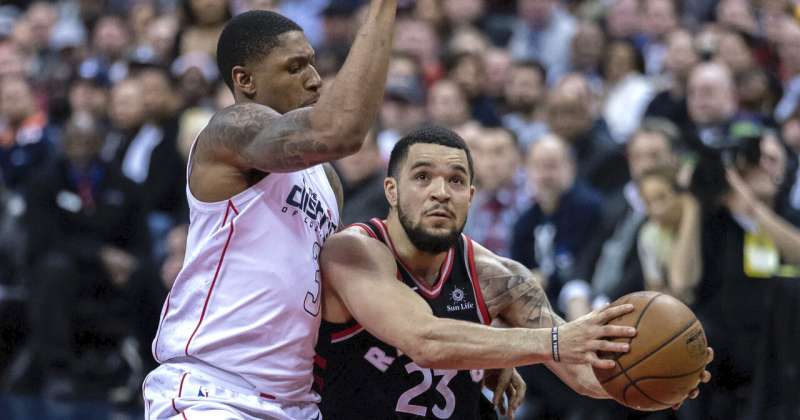Neuroscientists show planning ahead is key for controlling movement on and off the court

When Fred VanVleet brings the basketball up the court, the Toronto Raptors guard needs to read the defense and decide his next move while still controlling a continuous flow of movements to keep his dribble alive.
Depending on the actions of his teammates, and the opposing defenders, “Steady’ Freddy may have to change plans of action very quickly. And as any Raptors fan knows, he can.
A new study from Western University, supported by BrainsCAN, suggests that this sort of dual-task ability (planning ahead while controlling ongoing movement) is a fundamental aspect of complex skilled behaviors, like playing basketball. And, more importantly, this ability can be improved with practice.
Western neuroscientists Giacomo Ariani, Neda Kordjazi, Andrew Pruszynski and Jörn Diedrichsen found that improving planning can have a dramatic effect on the quality of performance and the ability to adjust ongoing behavior flexibly to meet external demands.
“Our research shows that practice improves the speed-accuracy trade-off for sequential performance in many ways, both when it is sequence-specific, which is repeating the same sequence of movements, and when it is sequence-general, performing different sequences within a task that requires the same stimulus-response associations,” said Ariani, a postdoctoral associate working with Diedrichsen in Western’s Sensorimotor Superlab.
Specifically, the ability to plan ahead while already moving appears to be a more crucial component of performing skilled sequential behaviors than improving in individual movements.
Everyone inherently thinks ahead about the next thing they want to do when moving in space, Ariani said, and these distractions can sometimes lead to “fumbles and mistakes” while conducting the task at hand. Pun intended.
“I think in our minds we tend to wander and project ourselves into the future. It’s natural, and indeed adaptively advantageous, to look and think ahead of time. It means that you are trying to predict events, anticipate consequences and prepare better responses.”
But sometimes this can backfire, Ariani said. “We have only so many cognitive resources that we can employ at a given time, and this can lead to errors.”
For the study, the researchers designed an experiment in which healthy volunteers had to perform sequences of 14 finger-presses on a keyboard quickly and accurately in response to numerical cues.
On each trial, participants were shown only a certain number of cues ahead of the current key press. The number of cues varied between one (next digit revealed with the pressing of the current key) and 14 (full view of the sequence). Participants practiced the task for five days and their performance was continuously assessed on random sequences.
The results indicated that participants used available visual information to plan multiple actions into the future, but that the planning horizon was limited: receiving information more than three movements ahead did not result in faster sequence production.
Source: Read Full Article


